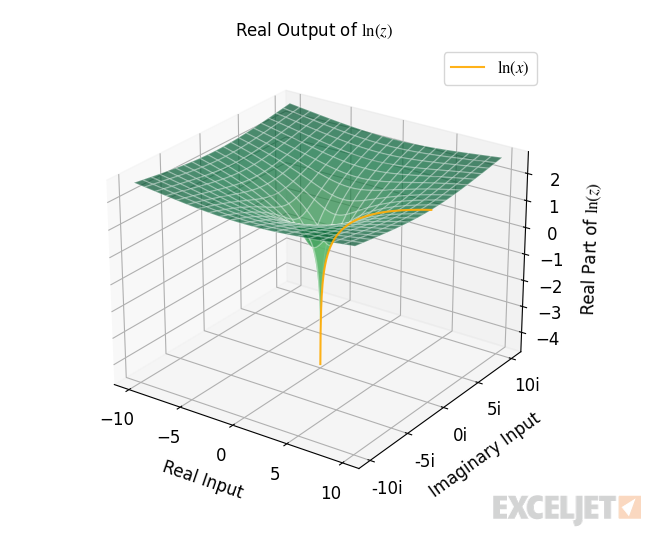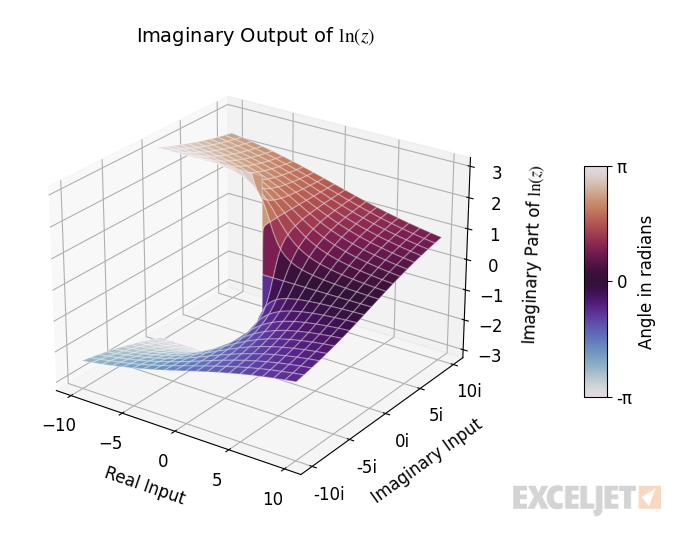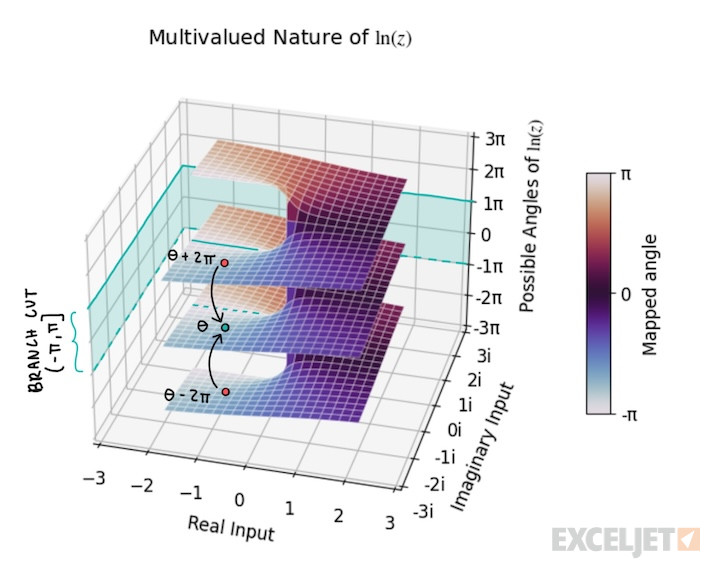The 3D graph below visualizes the imaginary part of the function’s output.
Geometrically, the imaginary part equals the angle in radians of the complex number output by the function.
The difference is because of the exponential function’s periodic nature.

For example, consider a complex number written in terms of its radius and angle (polar form).
The angle that describes the number can take on infinitely many values.
Because if you add 2 to any angle, you get an equivalent complex number.

This is why the complex logarithm ismultivaluedand could be expressed like this, wherekis some integer.
To make the complex logarithm single-valued, the angle is restricted to a particular range from - to .
Of course, many more angles correspond to the point “-1-1i”.

Any angle outside the range - to gets mapped to the branch cut.
The range of the branch cut is (-, ], which excludes - and includes .
The discontinuous jump of the branch cut is visualized by the 3D plot below.

LN Function
The Excel LN function returns the natural logarithm of a given number.
IMABS Function
The Excel IMABS function returns the absolute value of a complex number.
IMARGUMENT Function
The Excel IMARGUMENT function returns the angle of a complex number expressed in radians.

















